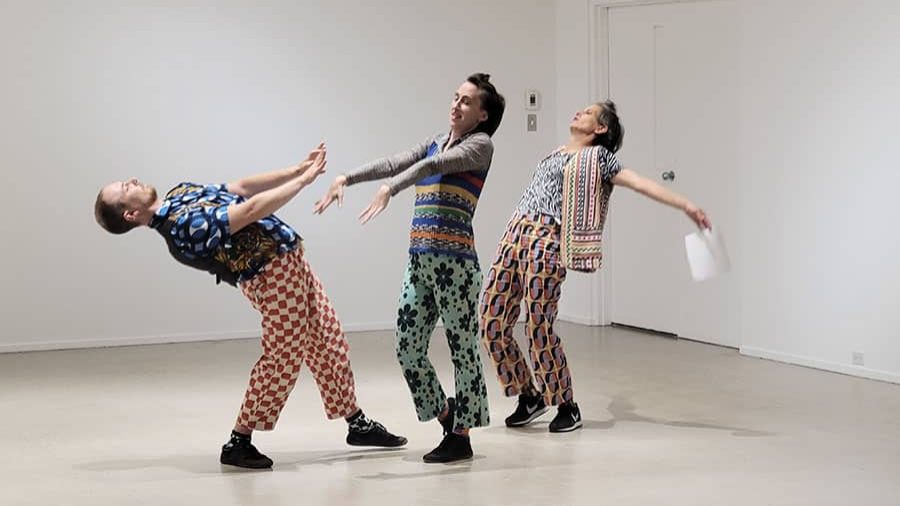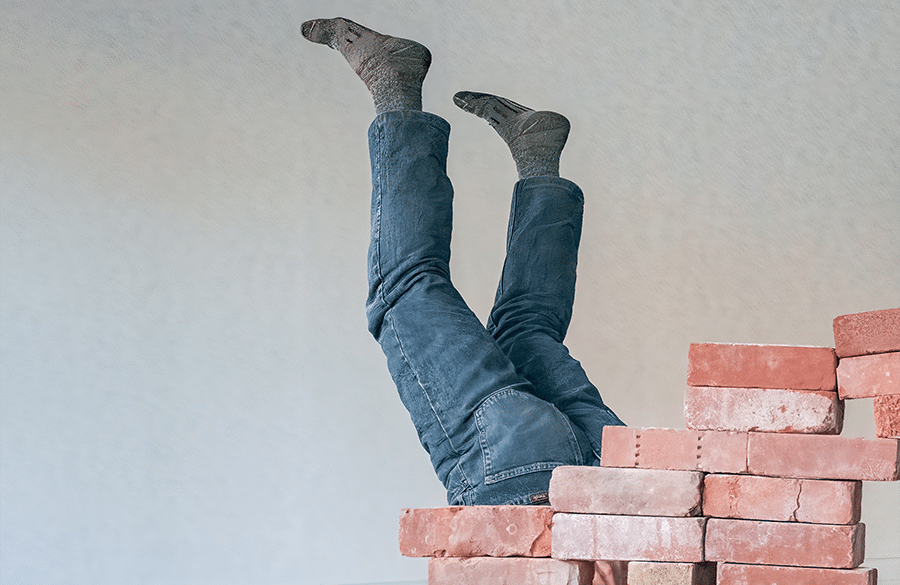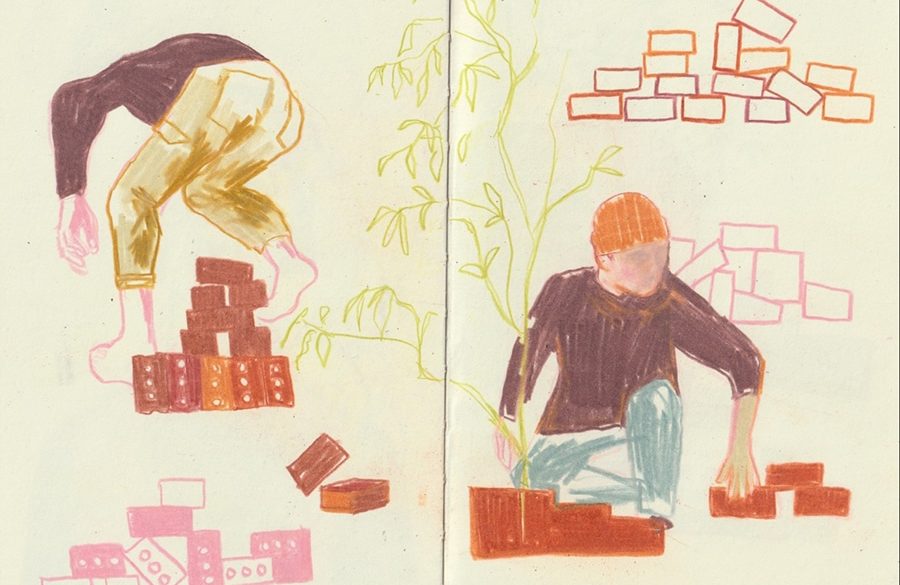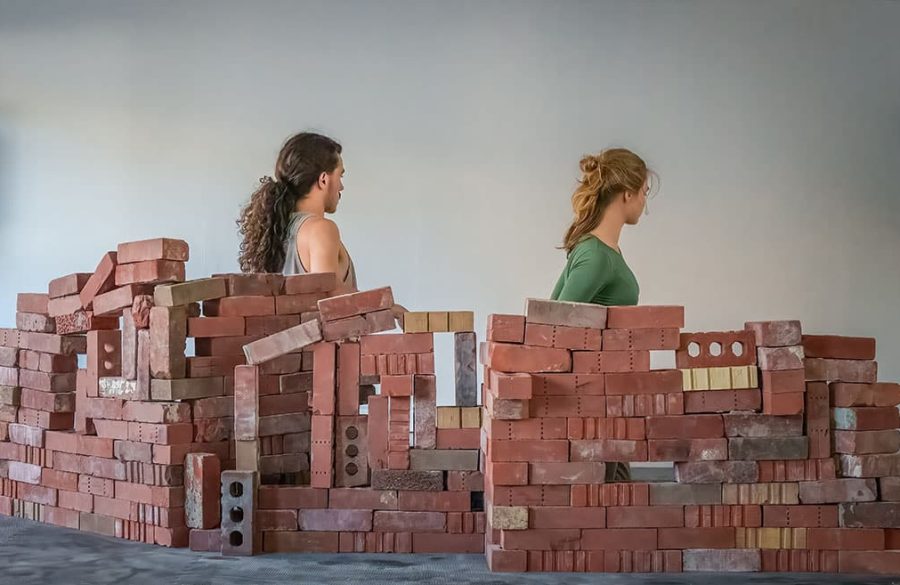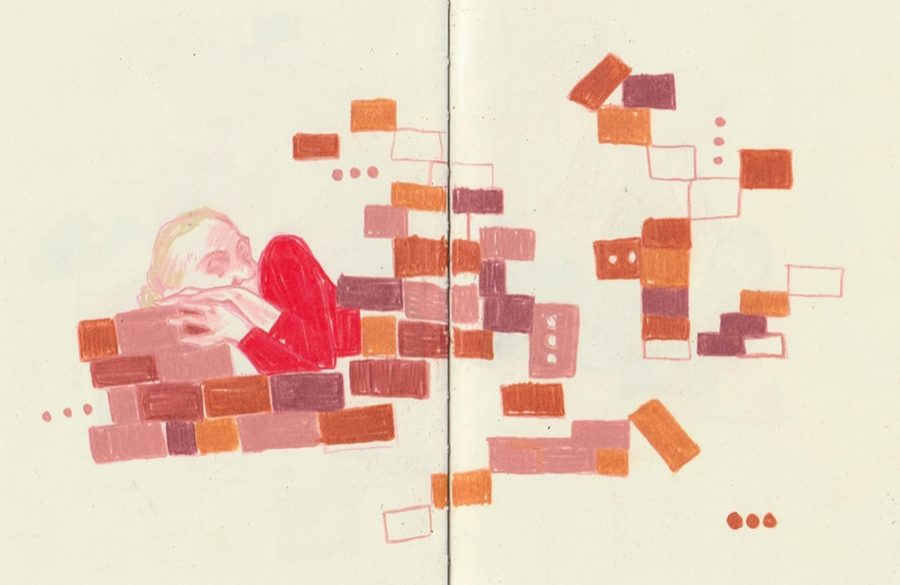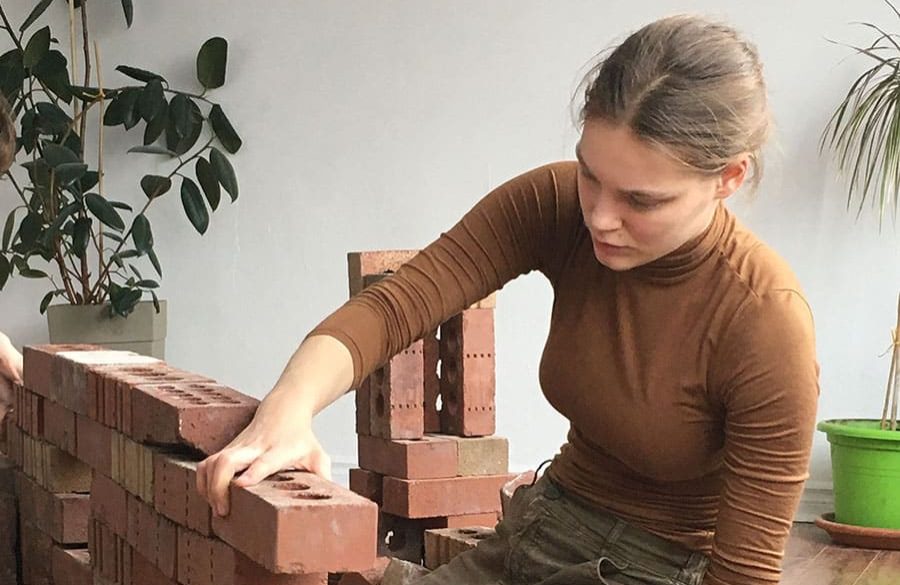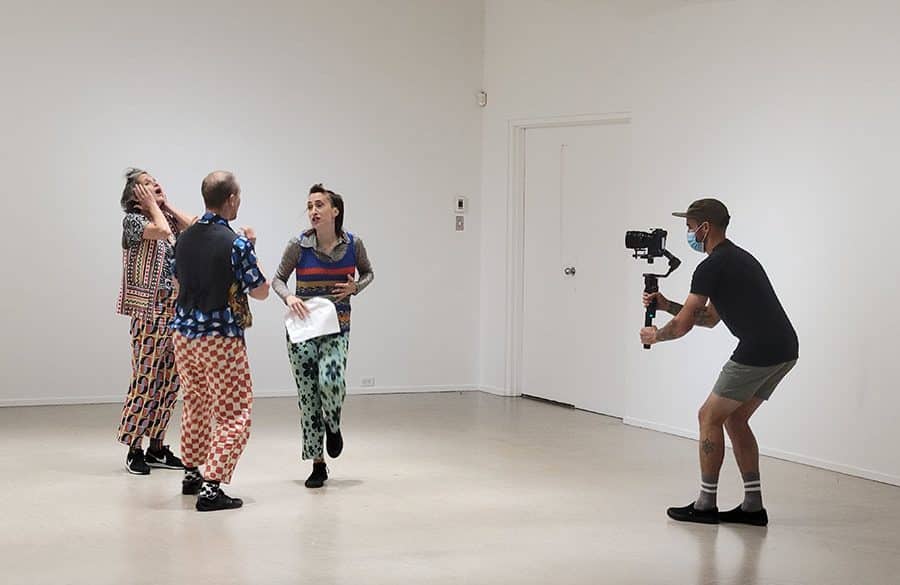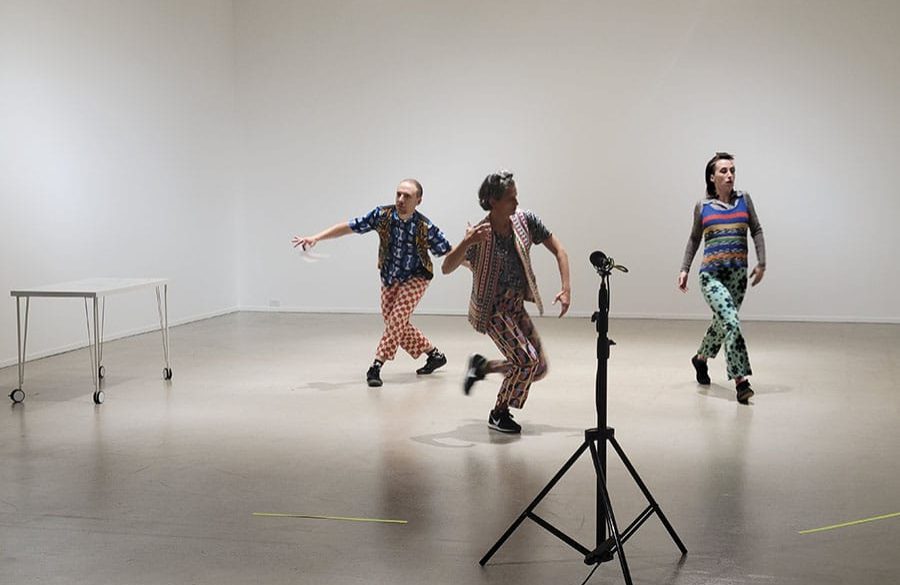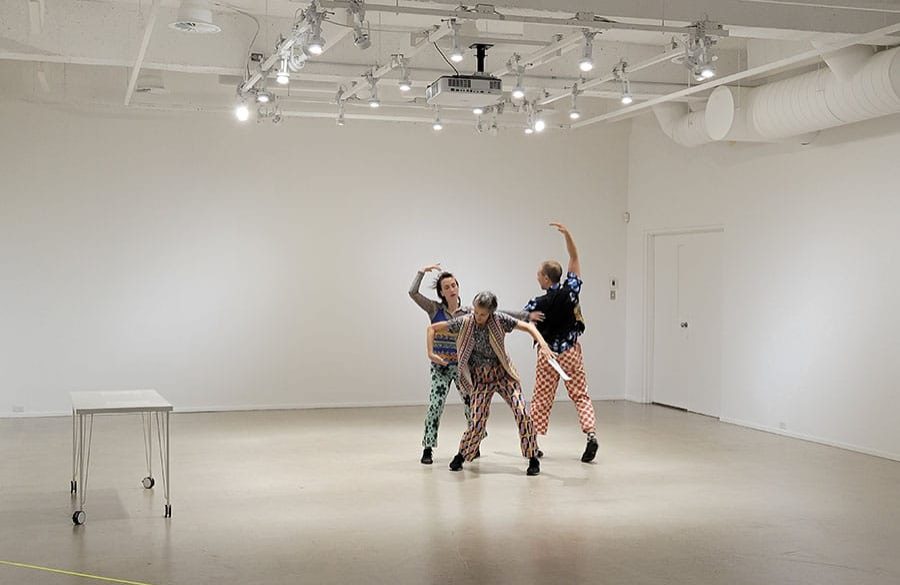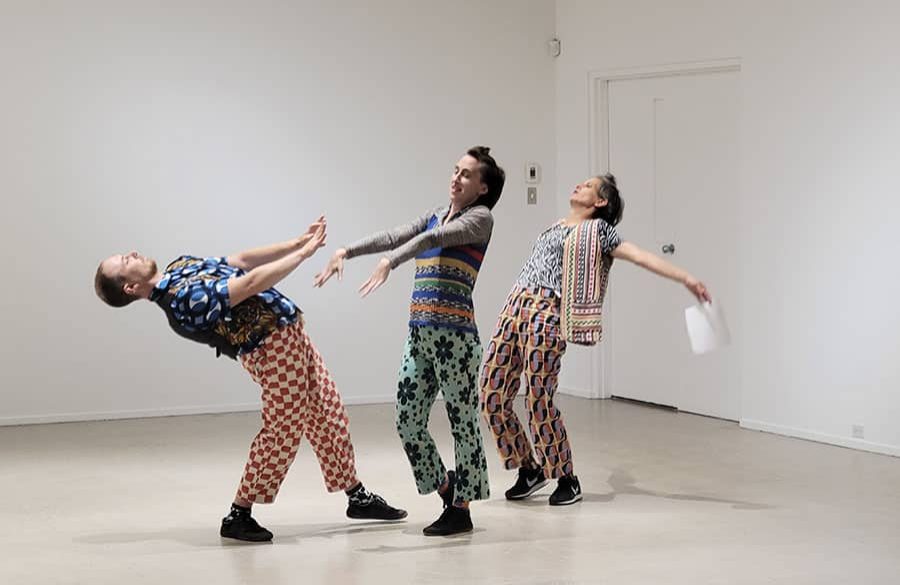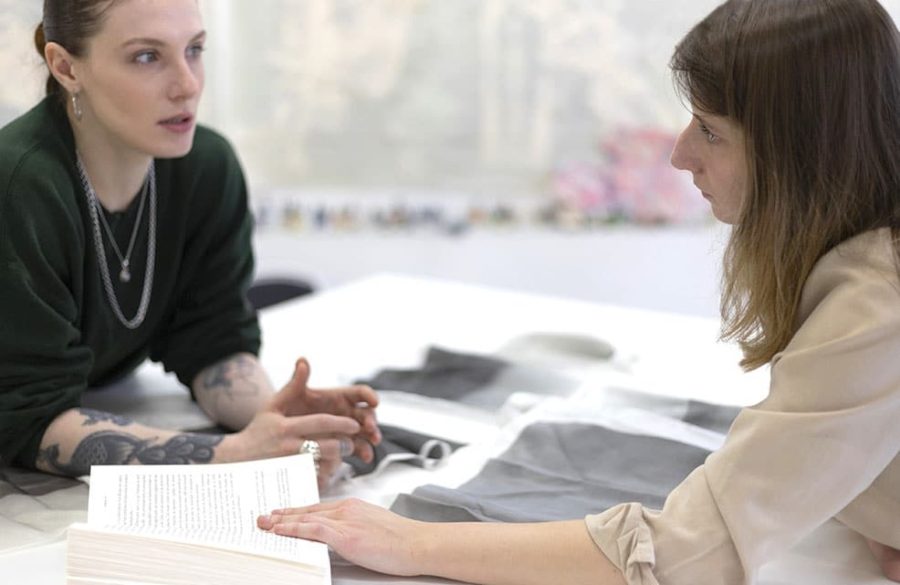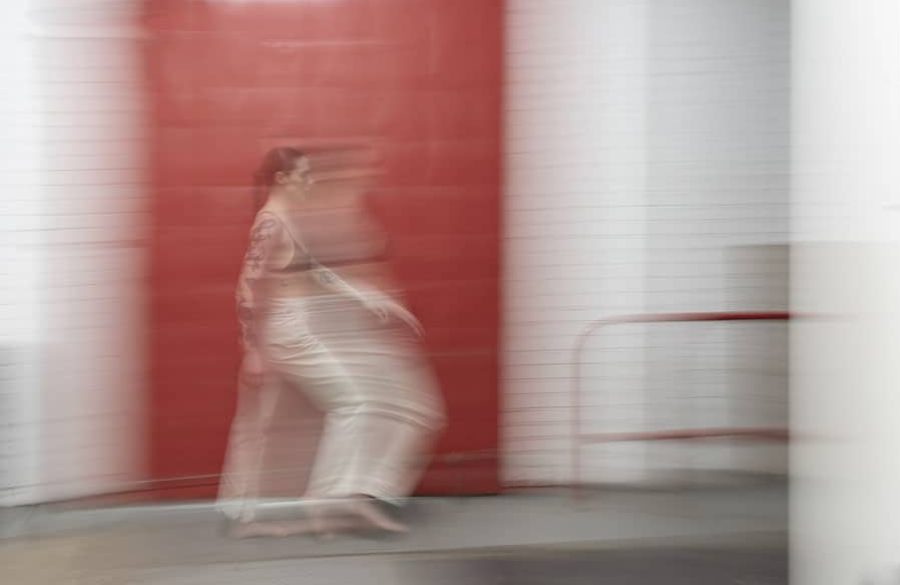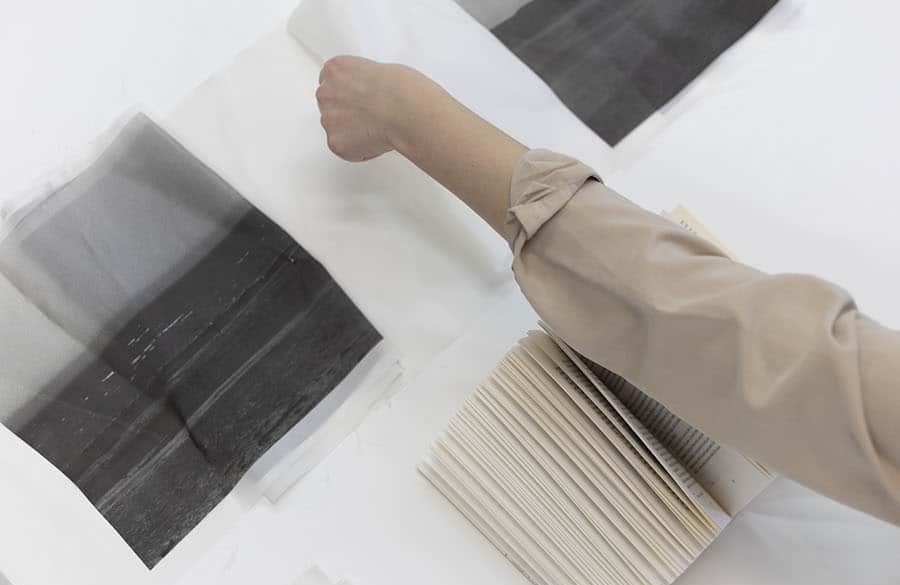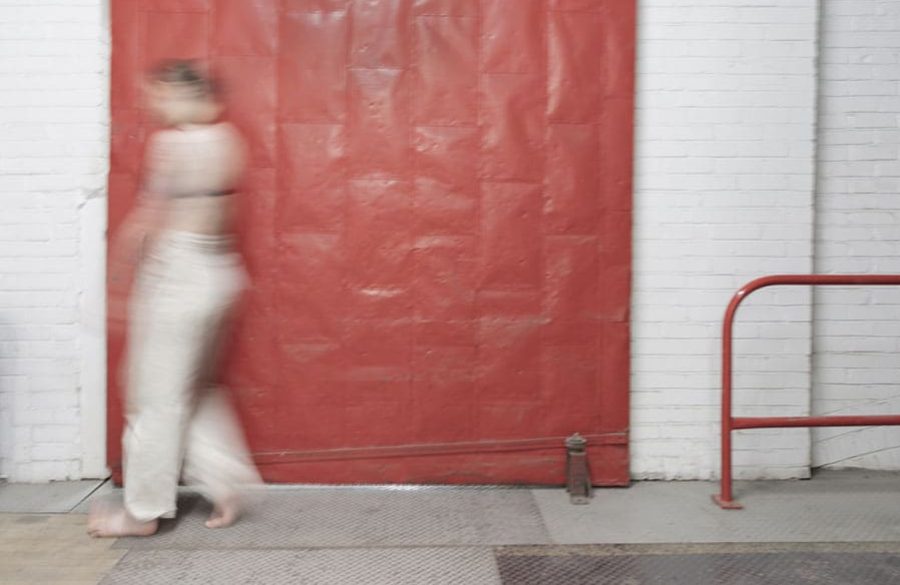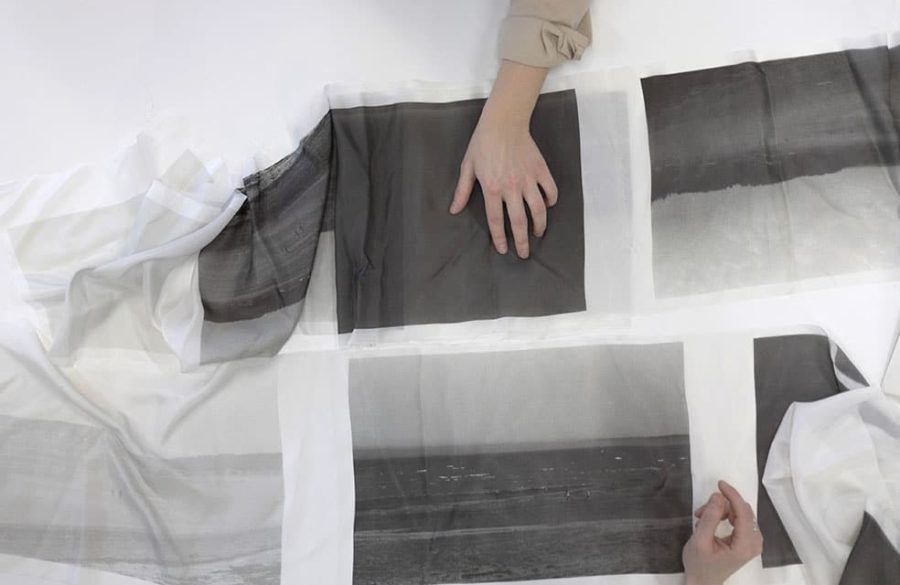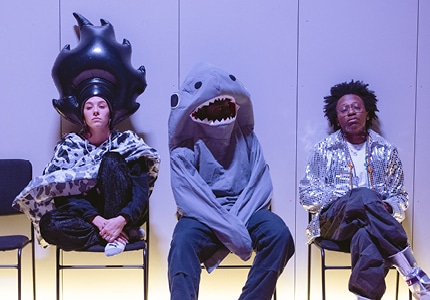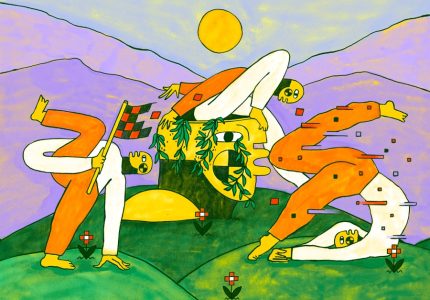Shared performance spaces
Philippe Dépelteau + Hanna Sybille Müller + Collectif FRAM
ÉDIFICE WILDER | ESPACE ORANGE
SEPTEMBER 27 & 28, 2023 - 5PM TO 9PM
SEPTEMBER 30, 2023 - 11AM TO 3PM
-
FREE: Dance & Sensitive Territories round-table discussion with the artists and Collectif Escargo, Lucy Fandel and Katya Montaignac on September 29 from 5pm to 7pm
A ticket allows you to come and go as you please over the 4 hours that the performances unfold.
Spilling out of the theatre and into the surrounding spaces, including the café-bar, the three research projects gathered here inspire wandering. Let your senses guide you and experience the space, the territory, and the world differently as the theatre becomes a library, a ruin, or a garden. How to coexist in a space that is ever changing? The work of Philippe Dépelteau, Hanna Sybille Müller and Collectif FRAM creates an archive of the body by revealing memories, traces, and imprints. At the heart of this radical ecology, what relationships does our physicality produce? In a desire to desecrate the stage, the artists propose an unusual visit and a perpetual reimagining of the site.
Philippe Dépelteau
S'imbriquer
Between perpetual construction and collapse, 2 performers and some 500 bricks form ephemeral landscapes together. Their encounters trace fragments of houses to inhabit, which in turn fragment the performers’ bodies. Like a living mortar, the movement fills in the interstices of the installation. Conceived as sentient beings, the bricks enter into a dialogue with the bodies as they both vibrate at the same frequency. In an evanescent dance, the performers appear and disappear into the material. A space for reflection and sensation, S’imbriquer raises questions about how we build and live in an endangered world.
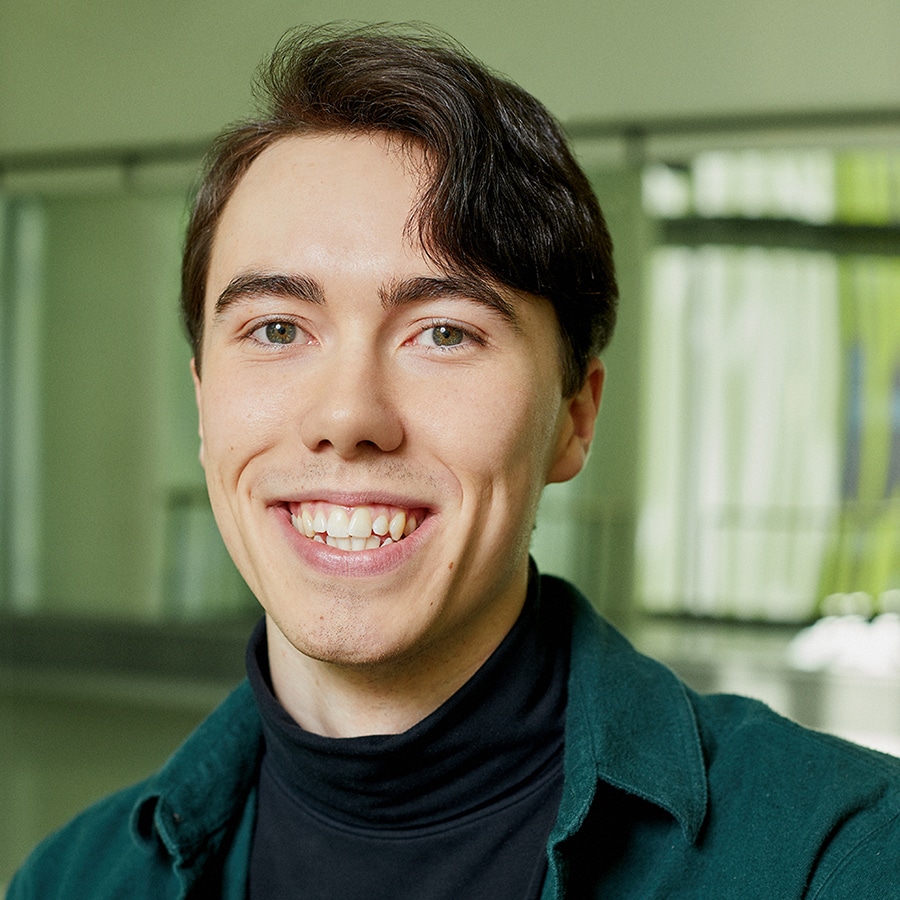
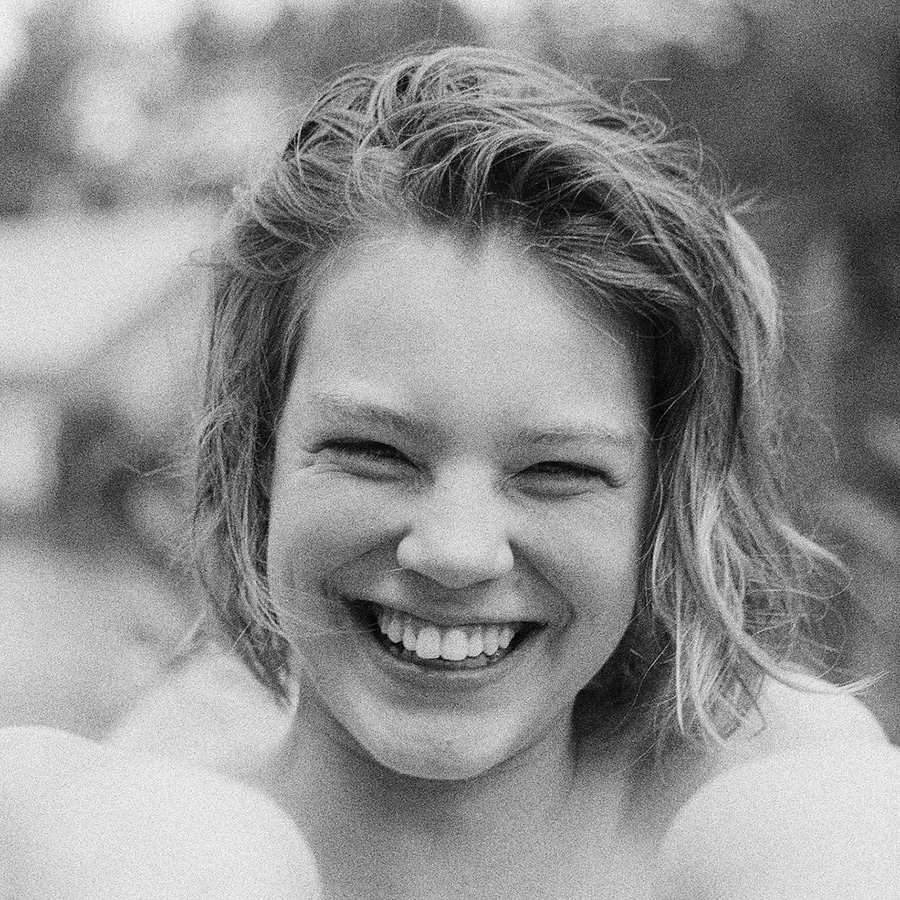
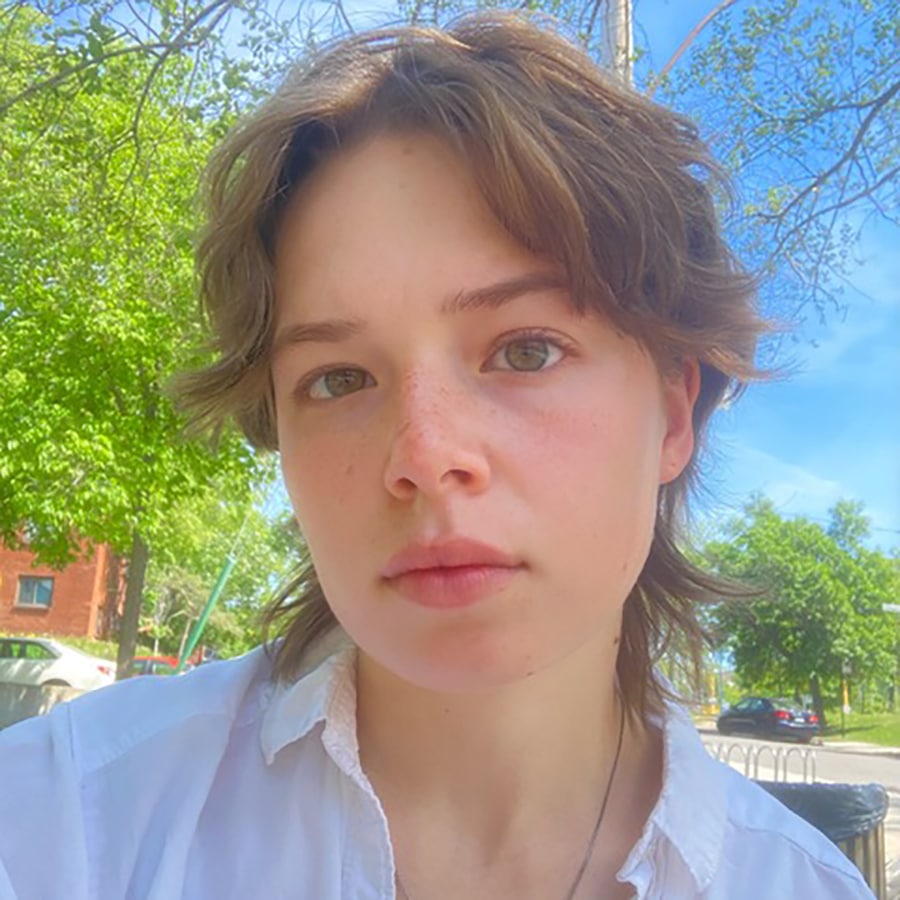
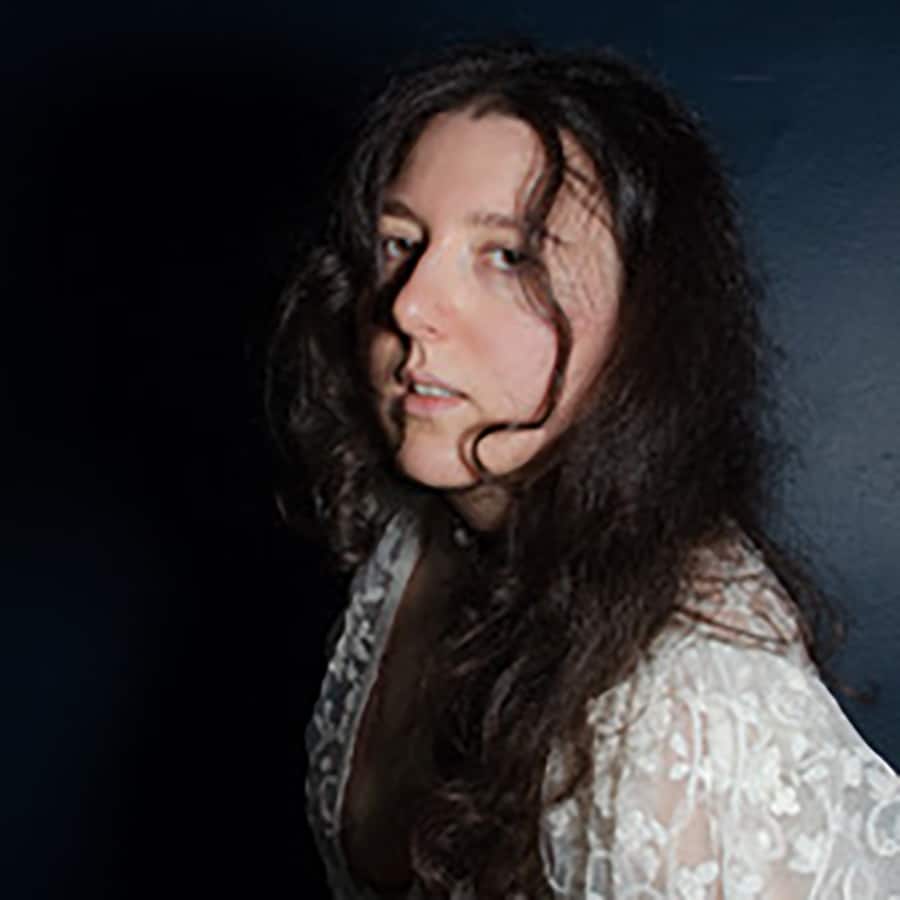
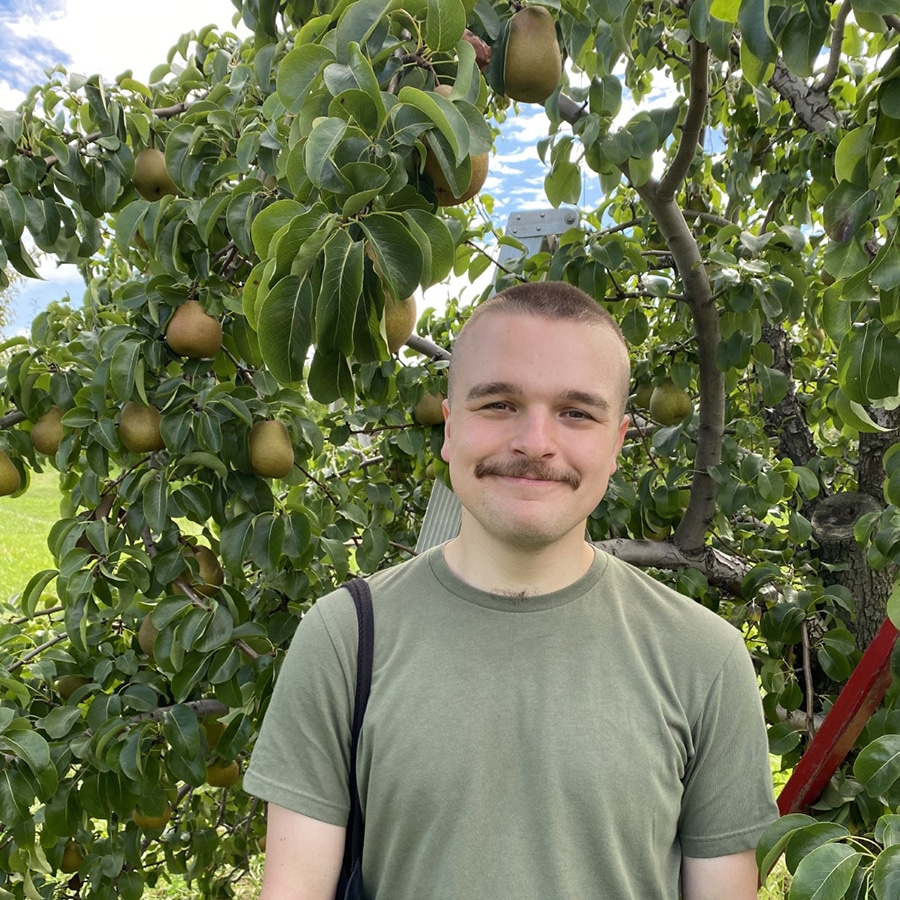
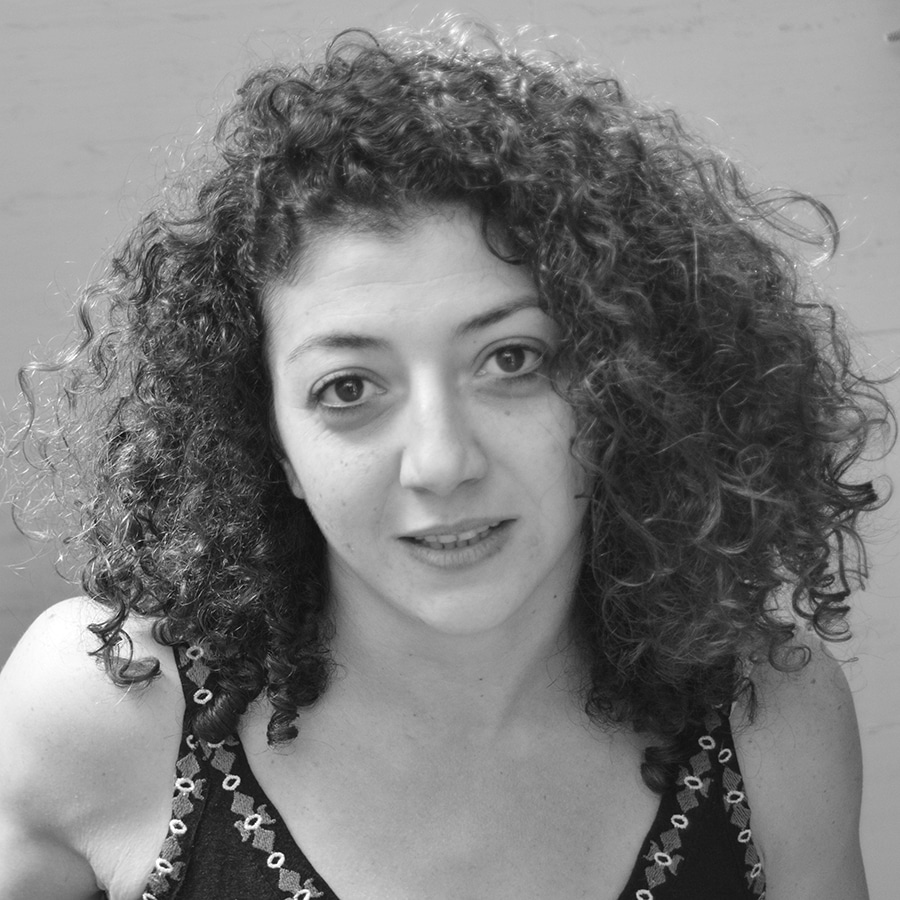
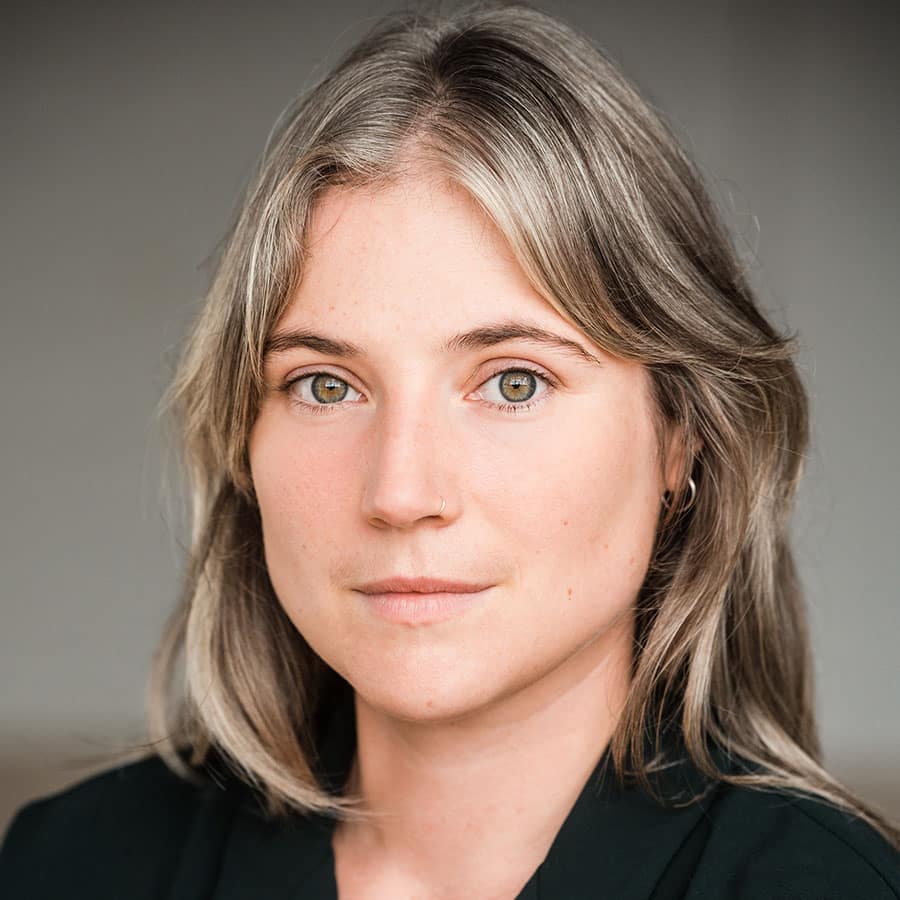
Financial support Conseil des arts et des lettres du Québec, Canada Council for the Arts, LA SERRE – arts vivants, Bourse Sofia-Borella
Residencies LA SERRE – Arts Vivants, Tangente, Maison de la culture du Plateau-Mont-Royal, PPS Danse/Diagramme
This project was supported by the Conseil des arts de Montréal and the Caisse Desjardins de la Culture as part of our “Donnez un coup de pouce, déplacez une montagne!” crowdfunding project on the La Ruche platform, a Tangente partner.
Based in Montréal, Philippe Dépelteau is a creator, performer and collaborator who works at the intersection of ecology and the living arts. From 2019 to 2021, he led the research process Ni d’Ève, ni d’Adam alongside Lauranne Heulot. This project sows the foundations of his creative practice, which aims to make the ecological crisis visible on a human scale. Philippe has been involved in several artistic exchange projects, notably in the nomadic residences of LA SERRE – arts vivants and the Ecology and Living Arts discussion circle. Since graduating from École de danse contemporaine de Montréal in 2020, he has collaborated as a performer with the collective Other Animals, Lucy Fandel, Charlie Prince, Aurélie Pédron, PPS Danse, and Sarah Dell’Ava. In 2022, Philippe co-founded the collective les petits papiers alongside Marie Lévêque and Luce Lainé.
Originally from Paris, Luce Lainé left France in 2017 to study at École de danse contemporaine de Montréal. In parallel to her studies, she begins the practice of authentic movement with Sarah Dell’Ava, which allows her to further develop the listening of her body and the encounter with that of others. After graduating, Luce worked as a performer for various choreographers such as Sarah Dell’Ava, Aurélie Pédron, Stefania Skoryna, Katia Marie Germain, Philippe Dépelteau, and Marie Lévêque. Luce focuses her personal research on improvisation. She deepens this spontaneous learning with Linda Rabin, Lara Oundjian, Hanna Sybille Müller, Andrew Harwood, and Susanna Hood.
Originally from Trois-Rivières and based in Montréal, Camil Bellefleur (they/he) emerges as a contemporary dance artist. They completed their formation at École de danse contemporaine de Montréal in 2020 and have danced with the LA TRESSE collective, Clara Furey, the company Je suis Julio, and more recently with Charlie Prince. Camil is also interested in choreography and has presented a solo titled First Layers at Danses Buissonnières in 2022, which led them to work with their mentor Daina Ashbee. They are also working on the creation of a collective with Julianne Decerf while completing their bachelor’s degree at UQAM.
Hailing from the Prairies and based in Montréal/Tiohti:áke, Cole Degenstein is an interdisciplinary artist whose work takes form in illustration, poetry, and bookmaking. Tenderness is at the core of his work, which centres itself in storytelling about intimacy, rural life, gay history, and domesticity. For the past ten years, he has been deeply involved in the Canadian self-publishing/zine community, having published numerous projects of his own work as well as organizing group exhibitions and anthologies.
Hoor Malas is a Syrian dance and movement artist who recently moved to Montréal. She began dancing at the age of eight in the Ballet School in Damascus. She got her BA in dance from the Higher Institute of Arts in Damascus (Syria) and a diploma in contemporary dance from The Northern School of Contemporary Dance, Leeds (UK). In her work, she dives into social matters influenced by personal experiences. Some of her latest choreographic works: Regression, 2016; Three Seconds, 2018; Hanging, 2019; Dust, 2020; and her new solo piece, If my body had a name.
Vanessa Massera has specialized in electroacoustic music, a medium she uses to express poetic ideas within the multiple cultural spaces and environments that fuel her inspiration. Her works have been programmed by the following festivals, among others: EBU Euroradio Folk Festival (Russia), Svensk Musikvår (Sweden), NWEAMO (Japan), EMUFest (Italy), Música Viva (Portugal), NYCEMF (USA), Sound Travels (Canada), and Ai-maako (Chili). Her piece Éclats de feux won the 2nd prize at the Jeu de temps / Times Play (JTTP) competition (Canada, 2016). She studied at the Conservatoire de musique de Montréal (2008-2012) and in 2019 received a PhD from The University of Sheffield (UK) for her thesis Environment in Electroacoustic Music.
In the summer of 2021, I was taking long walks in my neighborhood. I observed the multiple construction sites and the cranes that overlooked them. I found myself repeating “perpetual construction leads to collapse” in my head. On the grounds where a building had been destroyed, my gaze was drawn to the piles of bricks on the ground. I saw a lot of poetry in their existence. I imagined a micro-society, as if after the collapse of their structure, the bricks were waiting to come together differently. I imagined that they dreamed of collaboration, care and gentleness, that they were patient, crafting plans for the future.
In the installation S’imbriquer, the perpetual construction is negotiated with a limited number of bricks. What is built merges with what disappears. The landscape is slowly changing to leave room for the imagination.
Hanna Sybille Müller
The Choreographic Garden
A garden is not just a piece of land where we grow vegetables and flowers; it’s a place where political utopias take shape, where we practice scientific thinking. It’s a source of knowledge, of movement material. With The Choreographic Garden, three dancers engage in listening and relating to soil to look at how humans use, abuse, enjoy, and care for nature. They move in order to empathize with plants and learn from them. To make their presence tangible, visual artist Andrew Forster will build a small garden bed on stage. This is the first research phase in a theatre.

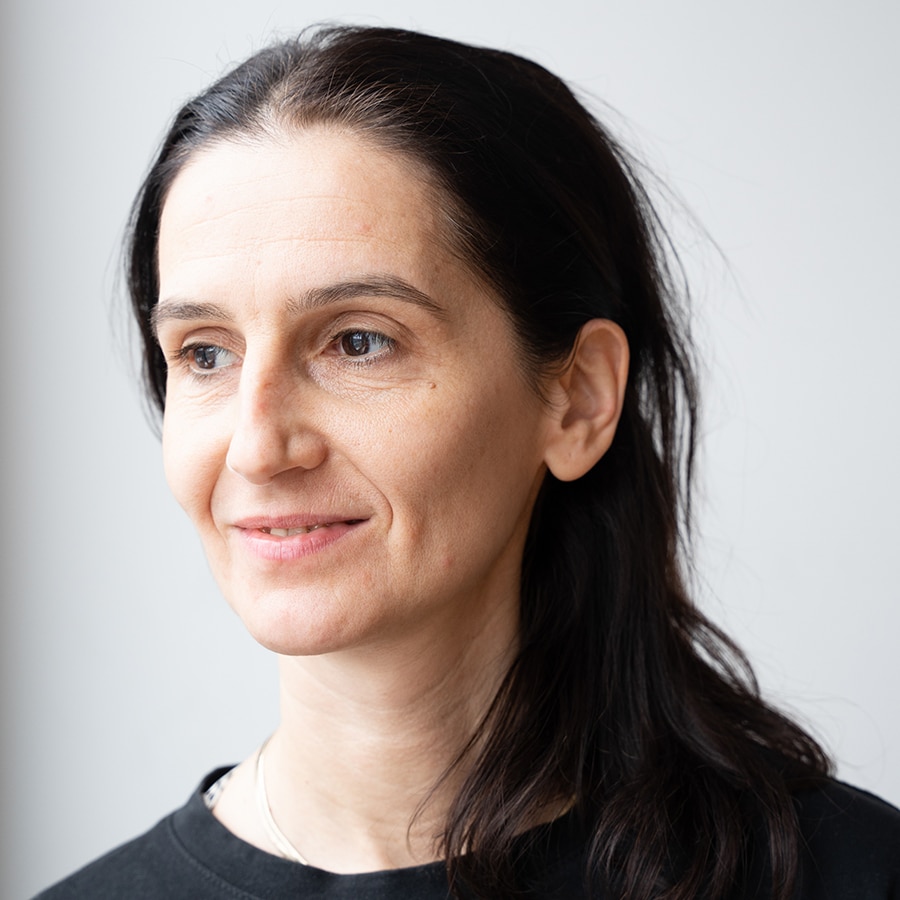
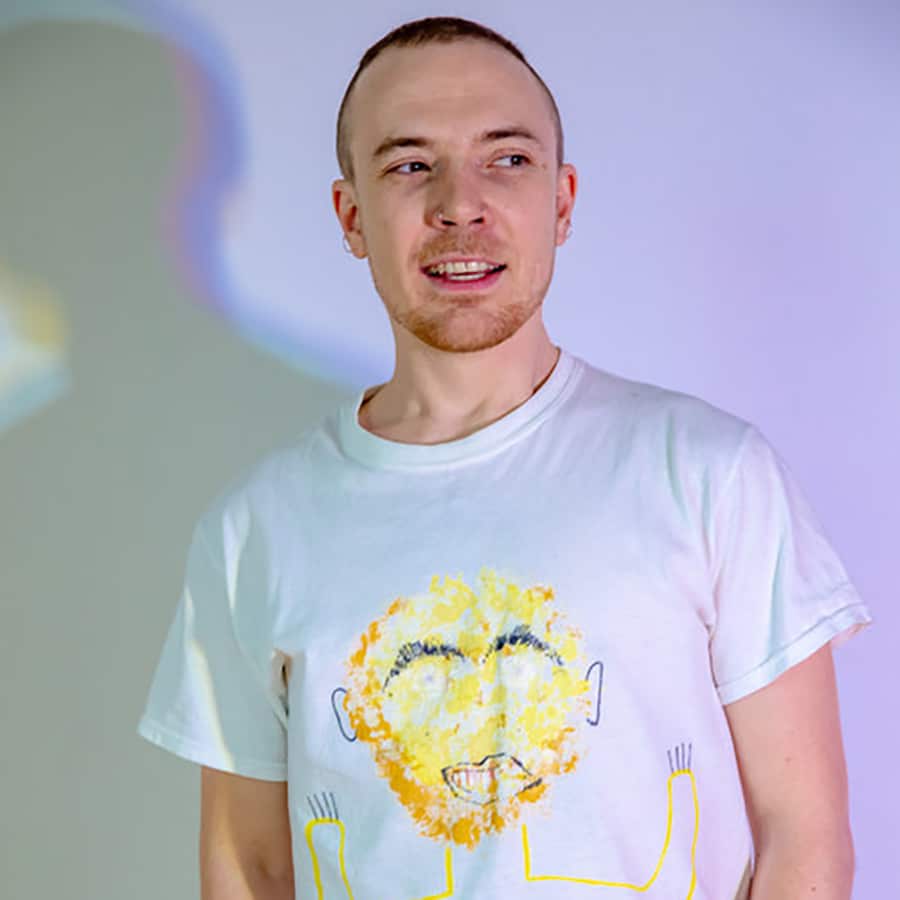
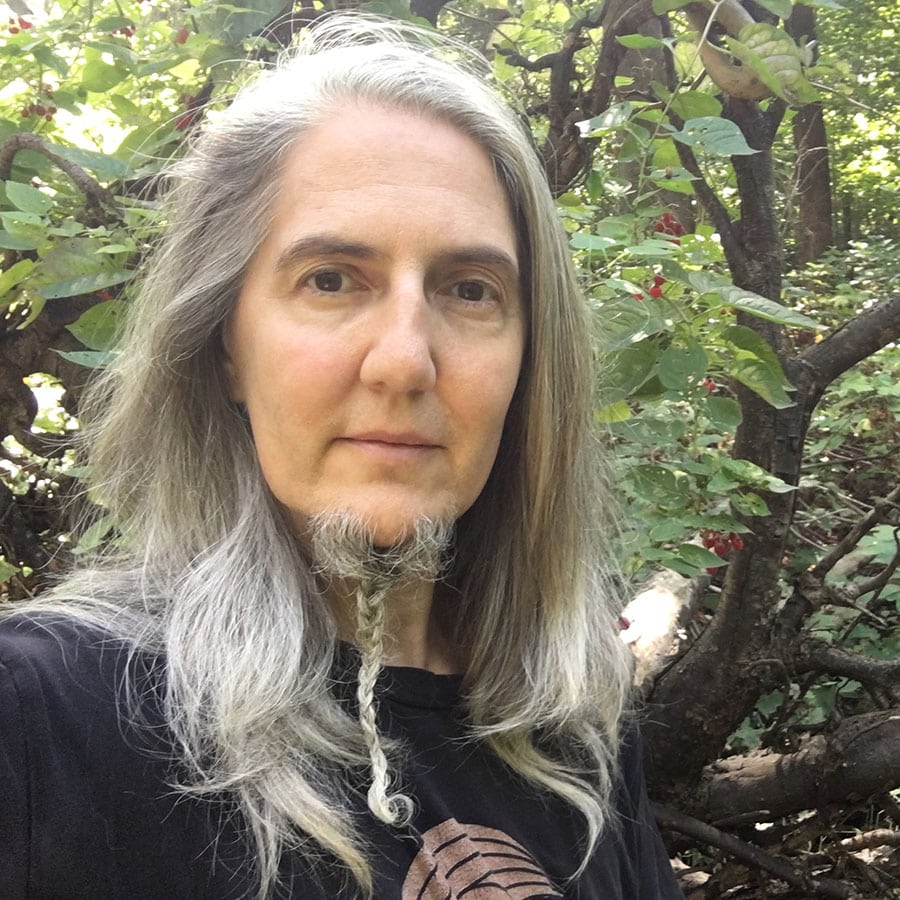
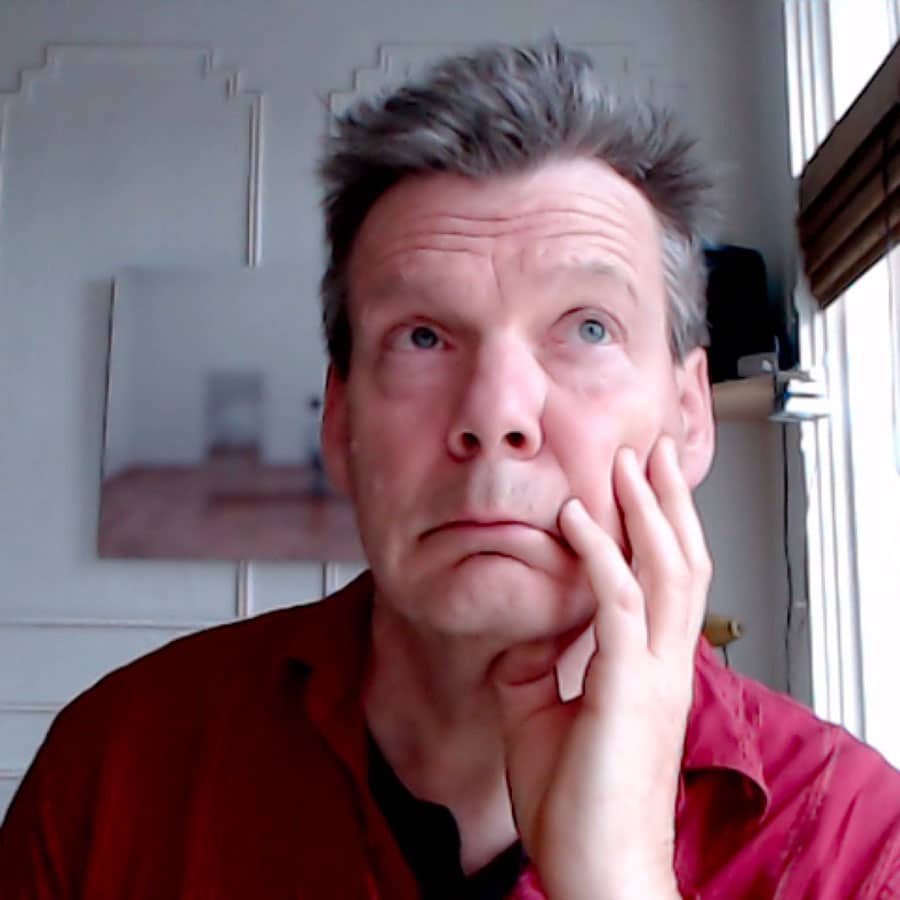

Financial support Canada Council for the Arts
Co-production Musée d’art de Joliette
Residencies LA SERRE – arts vivants (2019), Tangente (2023)
Thanks to Erin Robinsong, Kelly Keenan, Clark Ferguson, Linda Rabin, Mathi Loslier Pellerin, Laurane Van Branteghem, Anne-Marie St-Jean Aubre, Mathieu Pelletier, Mylène Samson, Marianne Cloutier, Jack Stanley, Irmgard Schaller, Iren Müller Licha, Emanuel Licha
Hanna Sybille Müller is a choreographer and dramaturg living in Tiohtiá:ke/Mooniyang/Montréal. Her main focus is language, movement, and its interrelations. Sybille is interested in the strange, magic and ordinary potencies of language and the body. She has been questioning what it means to collaborate with humans and non-humans, especially in her latest collaboration with Erin Robinsong, Polymorphic Microbe Bodies, which premiered as a somatic dance film (webcast) at Tangente in 2021 and was presented live at the OFFTA festival in 2023. Her most recent work, Moving through the Archive (2022), in collaboration with Galerie UQO in Gatineau, questions the objectiveness of archives and archiving. This work additionally led to the exhibition The instability of the Archive (2022). Sybille studied dance at the Rotterdamse Dansacademie and received a diploma in media studies at the Berlin University of the Arts in 2012.
Maria Kefirova is a dance artist based in Montréal. She makes performances, installations, videos and publications. She performs, writes, does research and gives artistic advice. Her work has been presented in different festivals and venues in Canada, US, Europe, and Mexico. Maria graduated from DasArts (Amsterdam), a residential laboratory for performing arts and research. She teaches and expands her choreographic practice through collaborations.
Nate Yaffe is an experimental dance, theatre and video artist based in Tiohtà:ke (Montréal), who researches queer strategies to create relational choreographic structures, fundamentally placing performance as a social exchange. His tactile dances dismantle movement shame through un-correcting the self-censored body. Nate initiated and curates the residency series This is actively built, which brings together queer artists to attack the question “What is queer dance?”, challenging the classic residency structure by restituting the artists’ autonomy to allow a cross-pollination of knowledge and practices. He was co-curator at Centre de Création O Vertigo (CCOV) alongside Hanako Hoshimi-Caines from 2020 and 2023.
Damaris Baker (they/them) is a white, grey-haired person, neurodivergent, non-binary, and quite ordinary otherwise. They have led community choirs and experimental voice groups, created short films and radio shows, taught music, and improvised soundscapes. Their performances included The Mermaid and the Robot, Epicenter Revolutions, Infinite Parachute and the Grotesque. They are fascinated by octopuses, whale songs, slime molds, soil, mushrooms, and the radical possibilities of disability arts. They dream of a world of responsiveness, playfulness, grief, and reparations: recreating new ways of entangling ourselves beyond police, prisons, and white supremacy. They have tinnitus and often get tired.
Andrew Forster is a visual artist, writer and curator whose work includes installation, performance, video, collaborations, curated exhibitions, and other outcomes. Recent works: Mer Parguayenne, a building wrapped in language, a collaboration with poet Erín Moure based on the writing of Wilson Bueno (2017); the video installation The Machine Stops, a fiction about the end of the world, recorded in Chandigarh, India (2019); No Bottom is an experimental document on the musical improvisation of violinist Malcolm Goldstein (screened at FIFA Montréal, 2023). A new series of objects and writing investigating the idea of nature, Waternature, began in 2022 with an exhibition in Montréal.
Diego Gil is an Argentinean choreographer, performer, and philosopher who studied in Amsterdam at the School for New Dance Development (BA) and Das Choreography (MA). He holds a PhD from the Humanities program at Concordia University. For more than a decade, he worked as a professional artist between Amsterdam and Berlin, and for the last eight years he has been based in Montréal. He worked intensively with the Sense Lab, a research-creation laboratory at the intersection of philosophy, art and activism, in the organisation of aesthetic-political events (e.g. minor movements, 2020-19; schizosomatic workshop series, 2019; movement of thoughts, 2018-17).
Dance artists Nathan Yaffe, Maria Kefirova and I will start a collaborative writing process to create dance scores that explore our bond to soil. I want to use a specific method of co-writing that I learned from artist twins deufert&plischke, which I adapted for my own research: the method of formulating and reformulating works with notebooks that circulate between all participants, their texts always being reformulated by someone else. Source materials will include philosophy, non-fiction, and poems, e.g. Byung-Chul Han’s Praise to the Earth (2019) and poems by Rainer Maria Rilke. The outcome of this shared writing process feels extremely entangled. This is the closest I think a group of people can come to act like a fungus network in a forest. To make the presence of a garden and the earth tangible, I will build a small garden bed in the theatre with the assistance of visual artist Andrew Forster.
Collectif FRAM
Espaces construits, corps mobiles
Espaces construits, corps mobiles (Constructed spaces, mobiles bodies) explores the links between constructed spaces and the performative act of walking. The FRAM collective, composed of dancer-choreographer Frédérique Rodier and artist-researcher Andréanne Martel, collaborates with composer Simon Chioini to examine multiple postures and modes of incarnation. How can we unfold our bodies and imagine new possibilities? Can sound and images act as mobilizing forces? This hybrid creation, inspired by the studio, the theatre and spaces dedicated to documentary research, invites you to become aware of your own body and ways of moving through spaces.
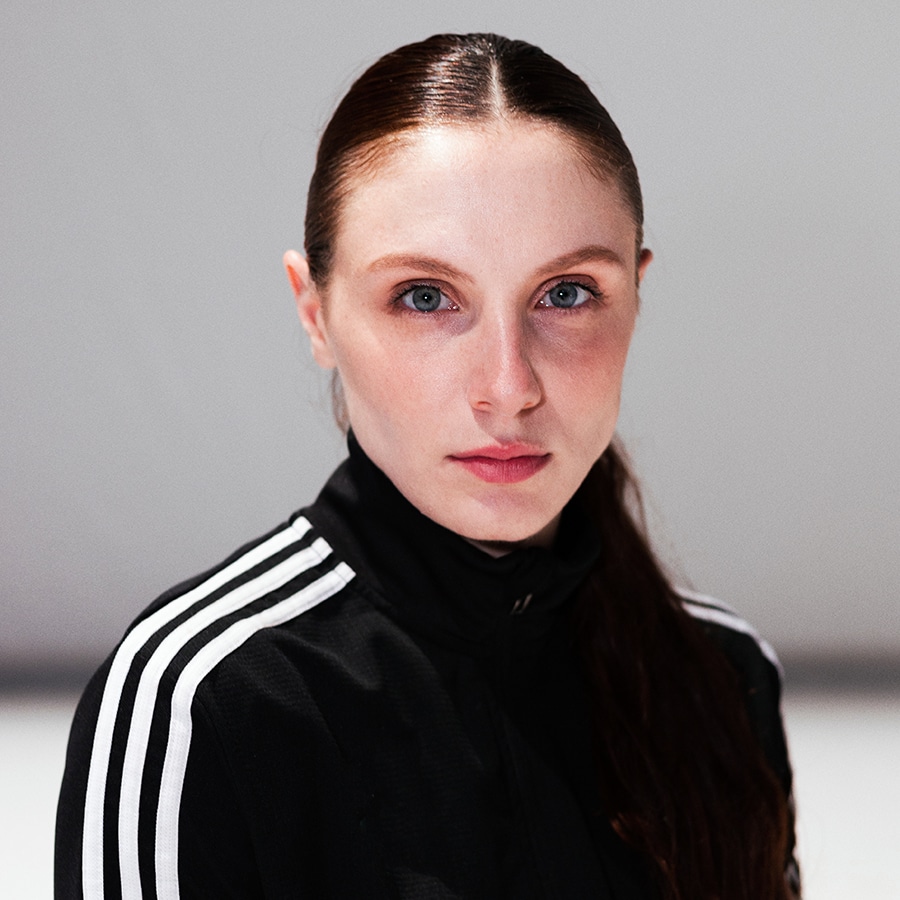
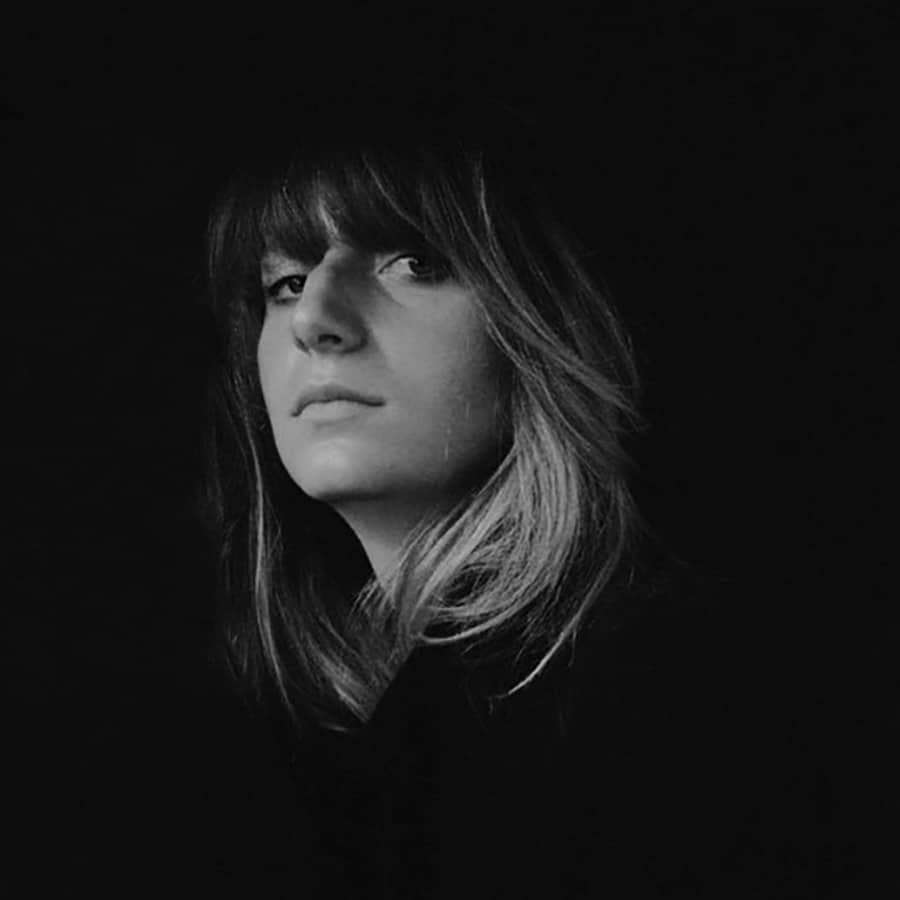
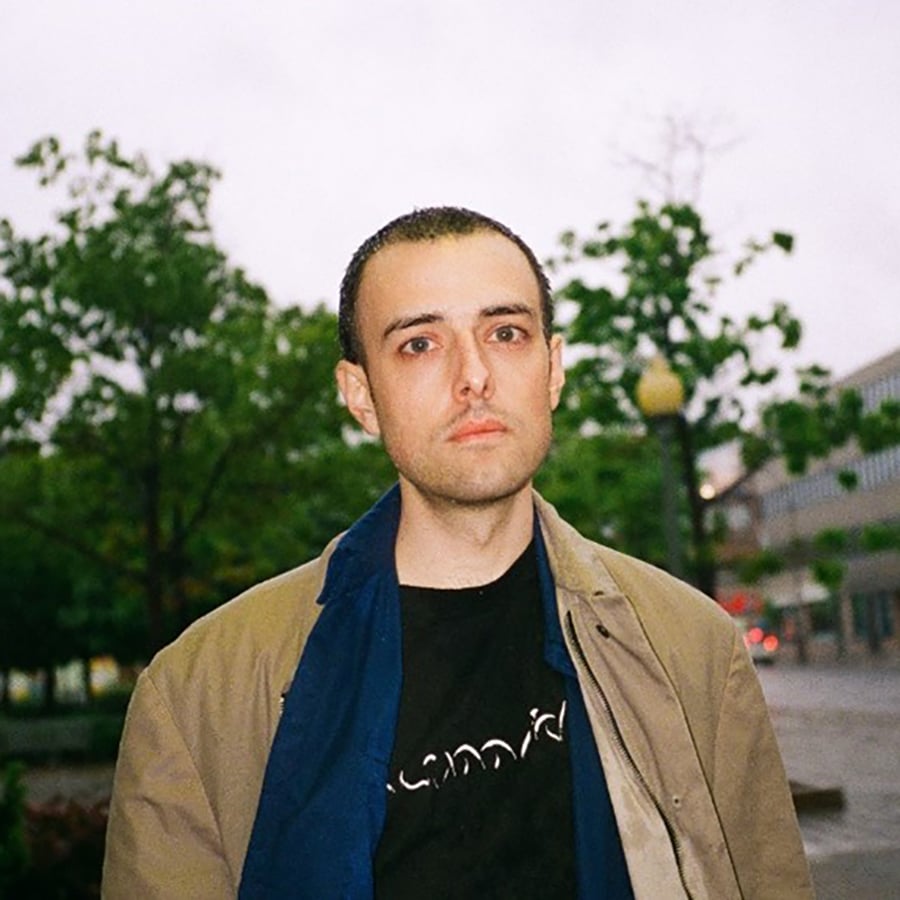
Financial support Canada Council for the Arts
Frédérique Rodier is a movement artist whose work is divided between the professions of creator and performer. She carries out interdisciplinary collaborations by joining forces with several research groups bringing together artists from different backgrounds, including visual artists, videographers, photographers, and composers. In 2017, she created the FRAM collective with artist Andréanne Martel. Together, they have presented performances at Tangente and Galerie Laroche/Joncas on several occasions. Frédérique graduated in performance at École de danse contemporaine de Montréal in 2014 and has since accumulated various training and explorations (creation workshops, somatic techniques, and many others). She currently works as a collaborating performer for Andrea Peña’s company, Andrea Peña & artists, and also works for Philippe Boutin’s company, Empire Panique.
Andréanne Martel is an artist and an interuniversity doctoral student in Art History (UQAM-UdeM-Concordia) and in Geography at Université de Genève. Her artistic practice unfolds between performance art and documentary research. She is interested in the interrelations between bodies, architectures and representations, in particular the sensitive experience of spaces; both constructed – territory planning, maps, plans, drawings, and photographs – and “natural”. In 2017, she founded the FRAM collective with artist Frédérique Rodier. Together, they have presented performances at Tangente and in galleries on several occasions. Andréanne’s doctoral research focuses on the role and impact of images – maps and landscapes – in the development of a colonial planning of the territory of what is now called “Québec” and “Canada”, as well as toponymy and oral history of which maps are the traces. Her projects have recently been funded by the Canada Council for the Arts, Danse-Cité, Bibliothèque et Archives nationales du Québec, and the Social Sciences and Humanities Research Council.
For the past decade, Simon Chioini has been creating a hybrid of new music aesthetics and genre-fusing electronic sounds. Through long-form electroacoustic pieces and sharp technoid productions, his excursions in abstract composition, often tied with club elements, have honest roots. Drawing from his academic research and a passion for outlier electronic music from past decades, his music is always connected to a diversity of genres and aesthetics, ranging from techno to electroacoustic. He currently pursues his doctoral studies in composition and sound art at Université de Montréal, where his research-creation project reflects on different practices of the ecology of sound, intending to demonstrate creative processes that foster a posture of care towards our environments. This complex relationship between sound and place follows a situational and relational approach to composition, where sound is used as the primary element of site-specific works. His past compositions were released on Where To Now? (London, 2016) and Anòmia (Barcelona, 2022), and were prized by the SOCAN Foundation and the Canadian Electroacoustic Community.
Espaces construits, corps mobiles (Constructed spaces, mobiles bodies) brings together our artistic practices, those of Frédérique Rodier and Andréanne Martel, artists of the FRAM collective. Frédérique, performer, explores her subjectivity and embodiment in the world through an articulated language, guided by improvisation and somatic. Andréanne, artist-researcher, is interested in the links between bodies, built spaces, and documentation. For this residency, the two artists collaborate with composer Simon Chioini. In his work, Simon seeks to create a branching relationship to space, where sound is used as a mobilizing force, capable of making the public aware of its environment.

